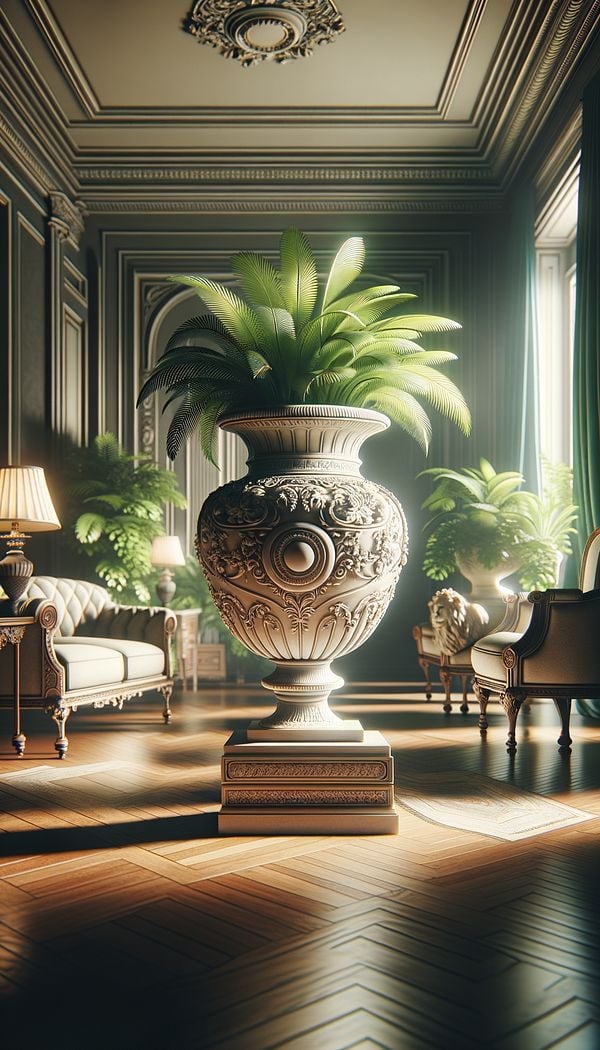What is an Urn?
An urn is a decorative container often used for displaying flowers or for ornamental purposes.
Description
An urn, in the context of interior design, refers to a vase-like container, typically made of ceramic, metal, glass, or stone, that symbolizes elegance and tradition. These containers can vary significantly in size, shape, and design, ranging from simple and minimalist to elaborate and ornate. Historically, urns have been used to hold the ashes of the deceased, but in modern interior design, they are more commonly used as decorative elements. An urn can add a sense of classical beauty or historical depth to a room, depending on its style and placement.
Urns are often used in both indoor and outdoor spaces. Indoors, they might serve as a sophisticated centerpiece on a dining table or a decorative accent on a mantle or shelf. Outdoors, urns are frequently used in gardens or on patios, sometimes as planters to hold flowers or other greenery. The material of the urn, along with its design, can significantly influence the overall aesthetic and atmosphere of a space. For example, a sleek, glass urn might complement a modern design style, while a stone urn with intricate carvings might be more suited to a traditional or classical setting.
Usage
In a residential setting, an urn may be placed in the foyer as a statement piece, filled with seasonal flowers to welcome guests. In commercial spaces, such as hotels or offices, large urns might be used in lobbies or common areas to add a touch of sophistication and to fill empty spaces. Urns are also popular in outdoor garden designs, serving not only as decorative elements but also as functional planters.
FAQs
-
Can urns be used for purposes other than decoration?
Yes, aside from their aesthetic appeal, urns can also be functional. For example, in garden design, they can be used as planters. In some cases, smaller urns may also serve as containers for small items like keys or jewelry.
-
Are there any specific materials that are best for urns?
The choice of material often depends on the urn's intended use and the desired aesthetic. Ceramic and metal urns are quite popular for both indoor and outdoor decoration due to their durability and wide range of designs. Glass and stone urns are also favored for their beauty and uniqueness.
-
How do I choose the right urn for my space?
Consider the style and color palette of the space, the urn’s placement, and its purpose (decorative or functional). Also, think about the material of the urn and how it complements other elements in your home or garden.
Practical Application
When incorporating an urn into your interior design, consider its scale in relation to the space and other objects around it. An overly large urn in a small room can overwhelm the space, while a small urn in a large room might not catch the eye. Additionally, think about the material and color of the urn and how they can enhance the existing design style and color scheme of the room. A strategically placed urn can add an air of sophistication and a touch of nature if used as a planter.
-
AmbryAn ambry is a recessed cabinet or niche traditionally used for storage in walls.
-
Morris ChairA Morris Chair is an early type of reclining chair.
-
Club ChairA club chair is a plush, upholstered armchair with deep seating, designed for comfort and relaxation.
-
Lit à la polonaiseA Lit à la Polonaise is a type of decorative bed characterized by its domed or arched canopy supported by three or four posts.
-
NRC - Noise Reduction CoefficientNRC is a standard measure to indicate how much sound an acoustic material can absorb.
